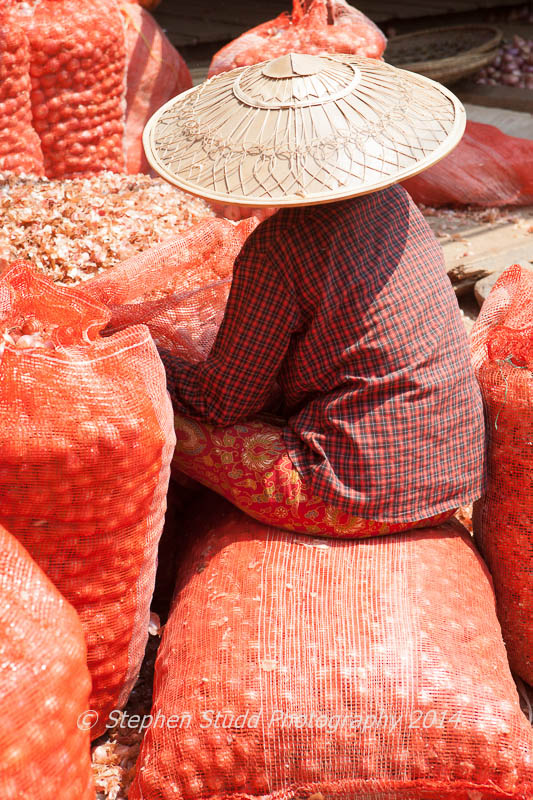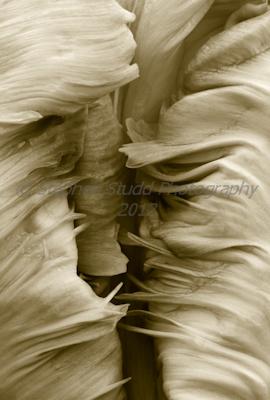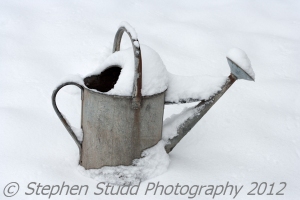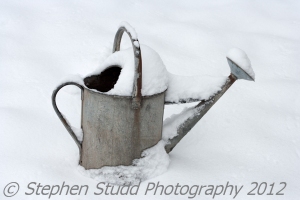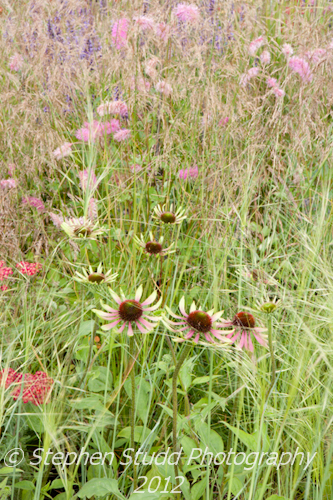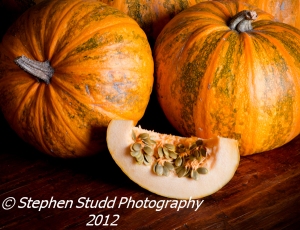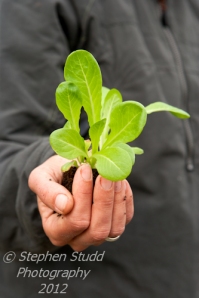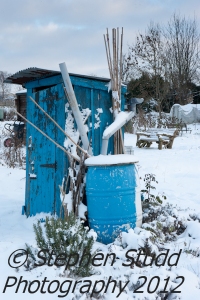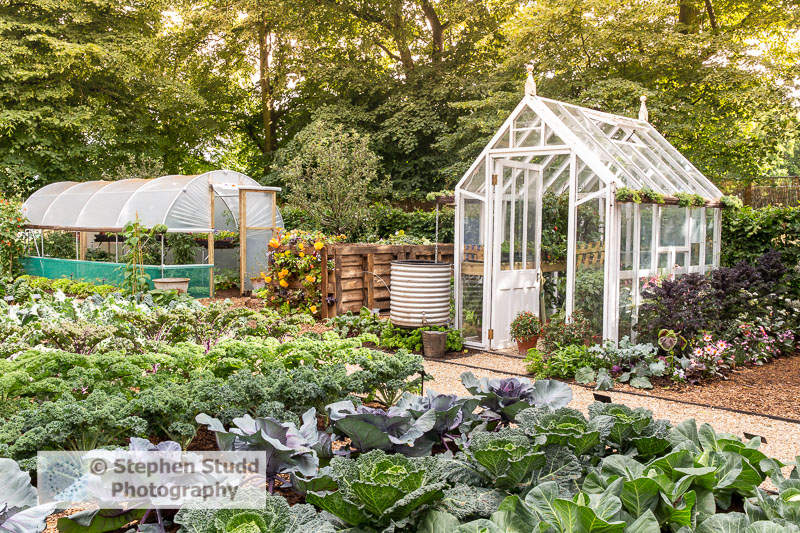
It was so exciting to return to RHS Hampton Court Palace Garden Festival and see friends again from the horticulture community and to meet new ones too. As an allotment holder myself I am focussing on this area for my first blog from an RHS show this year. I work my allotment with my wife on no dig, organic and permaculture principles, so it was fantastic to see the No Dig Allotment Demonstration Garden inspired by Charles Dowding and Stephanie Hafferty showcased at the show.
For those new to the no dig method it turns conventional fruit and veg growing and gardening on its head. By not digging you will not only save your back but most importantly you will not be not be disrupting soil life, which is the important micro-organisms, fungi and worms, that help feed plant roots. In a small handful of soil there are an estimated 10 billion bacteria and 1 million fungi. In that handful of soil are more living organisms than the total number of human beings on earth. By choosing not to dig the soil, this in itself sequesters carbon, as soon as the soil is disturbed carbon is released. Understanding this is so important to the health of the planet as we currently grapple with the climate emergency. The key to no dig is mulch, mulch, mulch and reap the benefits of soil health which translates to your health, spend less time weeding and watering, it really is a win win way of gardening.
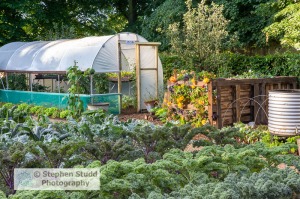
Over the past year and a half my own allotment has been a place of solace and healing too. Last year my brother was hospitalised with Covid and spent 2 months in ICU in an induced coma and on a ventilator. When he was finally discharged I went to pick him up in London and brought him home to our house for his recovery. We fed him a plant based organic diet with produce and herbs grown fresh on our allotment, even down to making fresh nettle tea from our allotment, yes it’s a herb and a medicine and beneficial to wildlife, you will have also seen it on the No Dig Allotment at Hampton. When he was strong enough he wanted to come with me to the allotment and I will always remember his comment that “this was so much better as all our raised bed aisles were packed full of healthy home grown produce”. He really appreciated the space up there as he has no garden, just like one in eight of the population of the UK. He spent all his time recovering from his ordeal in our garden and at the allotment and thankfully his recovery has been remarkable through this. I have valued this space too as a place of solace and for my own mental wellbeing during this period as I then sadly lost my father last September which was a tough time for all the family.

It’s the reason I was really drawn to spend the most time at the allotments, community and schools area at the show as people shared their stories and experiences of what community spaces and growing meant to them. There really was the biggest buzz at the show here as it was always busy with people sharing their experiences and visions too. When I chatted with Sara Venn about the show, I had said that the main show gardens were aspirational and out of the reach of the majority, Sara commented that this area was completely inspirational, which it truly was. The majority of the people I chatted with about the show had found this area the most interesting as there were so many ideas to take away with you.
I often see plastic pots on the tops of bamboo canes on allotments, how much better to use cork.

Repurposing empty plastic peat free compost bags as grow bags.
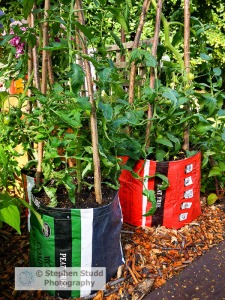
Reusing tin cans as containers for growing lettuce and plants in.


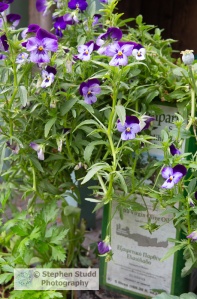
There were really wonderful bug hotels, my favourite ones were in the schools section. The Bugamid of Giza was really clever as it not only had places for insects and wildlife but also showed complex mathematics and geometry in its construction.
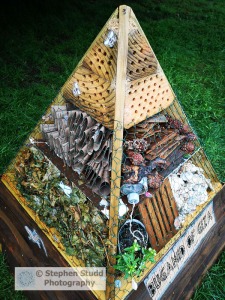
This telephone box must have been fun making at school too.

Loved this dual purpose insect hotel that was also a hot compost heap growing a squash plant.
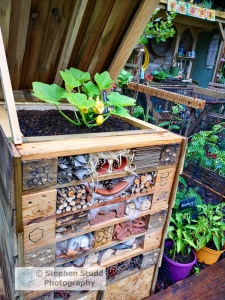
Flowers grown in old metal mop buckets, great repurposing.

Herbs grown in old painted watering cans.
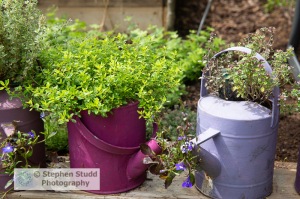
It’s so important to have wildlife areas in our gardens, allotments and community spaces as seen here on the No Dig Allotment. Nettles are not only useful to make your own nettle tea fertiliser, they are a good tonic for the body too. They are especially needed by beneficial insects such as ladybirds and butterfly’s and seed eating birds, plus nettles can be used to make cordage and clothes.
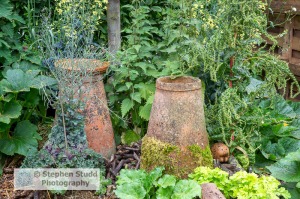
There were so many clever and inspirational ideas to take away from the show.
This old rhubarb forcer is used as a water station for birds and insects by using an old terracotta saucer filled with stone chippings.
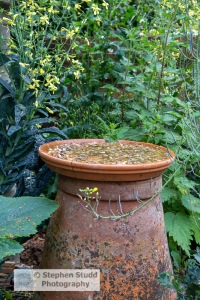
Allow some plants to run to seed and save the seed for sowing and sharing at local seed swaps. Swapping seeds with other gardeners in your local area is a good way to increase the variety of what you grow, as well as a good opportunity to pass on Heritage seed varieties, preserve seed sovereignty and to exchange gardening tips. Plants that run to seed and grown in your local area will have adapted to the soil and climatic conditions. Last year there was a major seed shortage as more people wanted to grow their own. Along with seed exchanges, local allotments and community spaces can organise areas where if you have grown too many seedlings for your own use you can leave them for others to take, this worked really well at our allotments in Stroud last year.

Love flowers and veg, grow them together for cut flowers,

for pollinators

or as companion plants.

Use roofing spaces for sedum roofs.

Create ponds for our aquatic friends after all frogs will eat slugs and snails.

If you don’t have the space horizontally try vertical gardening.


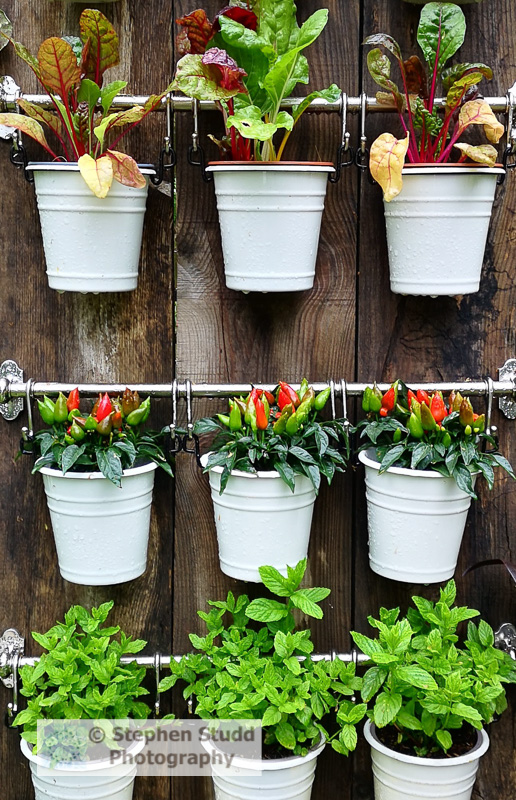

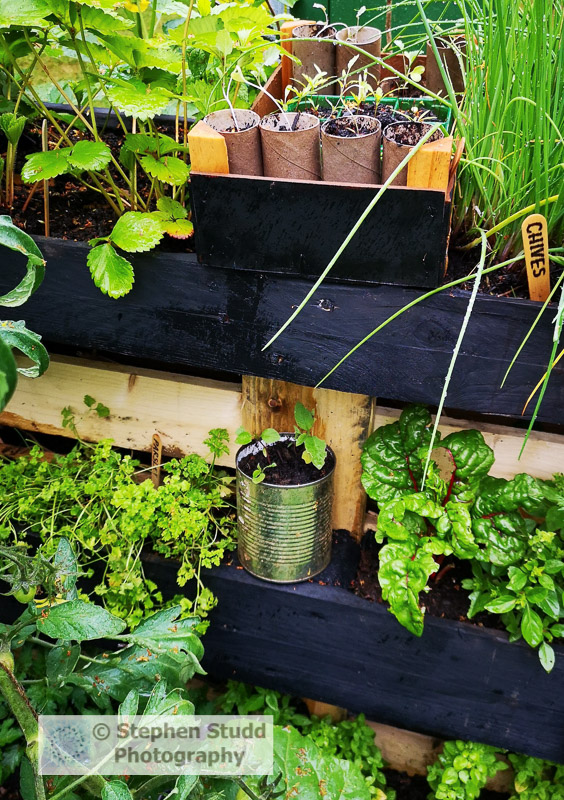
Healthy microgreens can be grown at home in repurposed containers.

I was shown around the Alton Local Food Initiative (ALFI) display.

They enable and encourage their local community to get involved in growing and eating locally grown fruit and veg by having plots and planters around the town and taking over disused plots of land for growing food crops, which reduces food miles and makes locally grown food accessible. They are one of many such community groups around the country involved in this type of action, reclaiming land and making positive change in the local community.

The whole allotment, no dig, community and schools space at the show really was a meeting place for nurturing ideas, sharing knowledge, stories and experience, a big reason why this area was so popular with visitors. The No Dig Allotment was a place you could walk through the garden and see it from the inside, it was very interactive, with talks scheduled each day from various inspirational speakers. These spaces inspired you to get involved in your local area and to make positive change and most importantly be part of the movement and growing community.
Please share any resources and links in the comments box below so that myself and others can visit and I’d love you to share what gardening, allotments and community spaces mean to you.
Social Media:
Instagram: stephenstuddphotography
Twitter: @stephensphotos
Facebook: Stephen Studd Photography







